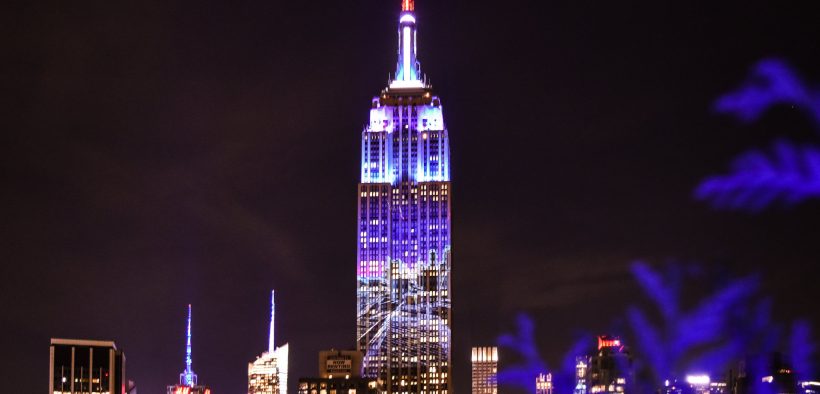Major Election Reform Victory as New York City Passes Ranked Choice Voting

With New York City’s adoption of ranked choice voting, will ranking candidates by preference become the new norm in elections across the country?
When polls closed Tuesday night, perhaps the biggest victory for democracy reform came in New York city where voters overwhelmingly approved Ballot Question 1, adopting ranked choice voting in local and special elections.
New York City is not the first city to adopt ranked choice voting, but it became the largest Tuesday night. New York’s ranked choice voting victory (RCV) suggests the adoption of RCV could continue to sweep across the country, potentially setting the U.S. on a path toward fundamentally altering (and fixing) U.S. elections.
Twenty-one cities besides New York plus the state of Maine have already adopted RCV in local elections, while five states (Alaska, Hawaii, Nevada, Kansas and Wyoming) use ranked choice voting in Democratic presidential primaries.
What is Ranked Choice Voting?
Democracy reform organizations like Equal Citizens, FairVote and Represent Us argue ranked choice voting results in candidates more representative of the voting electorate winning by eliminating the “spoiler effect” of lesser-known independent candidates and by encouraging more diversity of candidates.
In the current traditional plurality voting system, voters pick one candidate they want to win. But if a voter’s top choice is a third-party candidate they may be discouraged from voting for them, for fear of “throwing their vote away” on a long-shot candidate. With ranked choice voting, voters can select multiple candidates, ranking their choices for office by order of preference. If no candidate wins a majority then voters’ second and third choices are taken into account.
Fairvote, a national nonprofit that advocates for RCV describes the vote count process as follows:
“For a single office, like for a mayor or governor, RCV helps to elect a candidate more reflective of a majority of voters in a single election even when several viable candidates are in the race. It does this by counting the votes in rounds:
“Voters get to rank candidates in order of choice. If a candidate receives more than half of the first choices, they win, just like any other election. If not, the candidate with the fewest votes is eliminated, and voters who picked that candidate as ‘number 1’ will have their votes count for their next choice. This process continues until a candidate wins with more than half of the votes.”
In 2018, a Maine congressional race showed exactly how ranked choice voting works. After counting votes for Maine’s Second Congressional District, Republican incumbent Bruce Poliquin tallied 46.1 percent of the vote to Democrat Jared Golden’s 45.9 percent. Since neither candidate won a majority (over 50%) of the vote, the votes of third-party candidates were re-allocated to their second choice candidate. After the reallocation, Golden won the race with 50.53% of the vote to Poliquin’s 49.47%.
According to USA Today, Maine’s system of ranked choice voting could have applied to six other House races in 2018 and two Senate races. In most of the House races, the system would have favored Republicans but some would have favored Democrats too. Most importantly though, voters are able to vote for their top candidate without negatively impacting their second choice.
New York City’s Ranked Choice Voting
After the RCV victory in New York on Tuesday, voters will still be allowed to vote for just one candidate, but now voters can also choose up to five ranked choices in primary and special elections for mayor, public advocate, comptroller, borough president and city council seats. New York will have a year to switch to the new system and educate voters, with the new RCV method set to take effect in January of 2021.
Common Cause NY which spearheaded the push for ranked choice voting in New York celebrated Tuesday’s victory by calling RCV the “simple solution that puts power back in the hands of the people where it belongs.”
Tonight, New Yorkers said yes to ranked choice voting and made history ✨✨✨
Statement from @Slerner212 below: pic.twitter.com/p5RmdXGQwi
— Common Cause NY (@commoncauseny) November 6, 2019
With the implementation of ranked choice voting in New York City, New Yorkers may see more women and minorities elected to office. A study by FairVote looking at the effects of ranked choice voting on elections in San Francisco, which has used RCV since 2004, found that after implementing RCV more people of color and more women have been elected to office:
“Fifty-three (53) offices are elected by ranked choice voting in the Bay Area. Women and people of color hold 47 of these seats (89%), a sharp rise from pre-RCV elections. Since RCV implementation, women and people of color have won 81% of all elections, compared to 67% in the same amount of races pre-RCV.”
In another study, FairVote also found RCV resulted in more civil elections and less negative campaigning. According to the survey, “Likely voters in cities that used RCV in their local elections in 2013 and 2014 were more satisfied with the conduct of candidate campaigns, and perceived less candidate criticism and negative campaigning in the lead up to their local elections.”
And the positive increase in election civility was seen across all socio-economic demographics:
“Virtually every demographic group studied – including low-income respondents, college graduates, Latinos, African-Americans, women, Independents and unmarried people – reported less negativity and less candidate criticism in RCV cities than in plurality cities.”
New Yorker City may well be on its way to more civil and more representative elections and happier voters. As more cities adopt ranked choice voting and if its positive effects come to fruition, the only question left is how long before your city or state adopts RCV?








What good are ranked choices when all of the choices are rank? Who controls which names eventually appear on ballots? Is it “the people”? Obviously not.